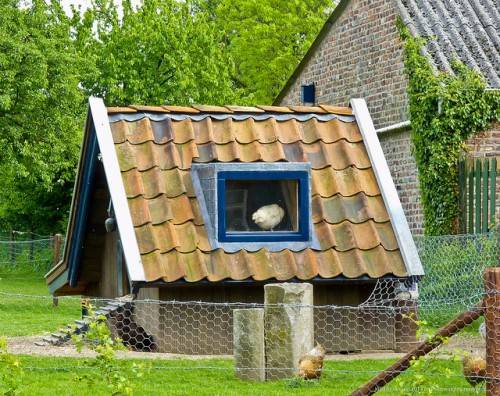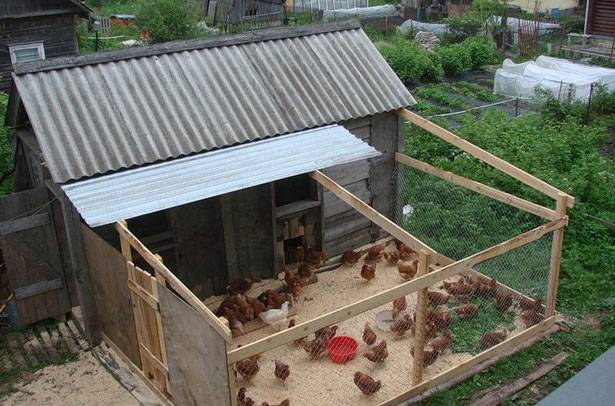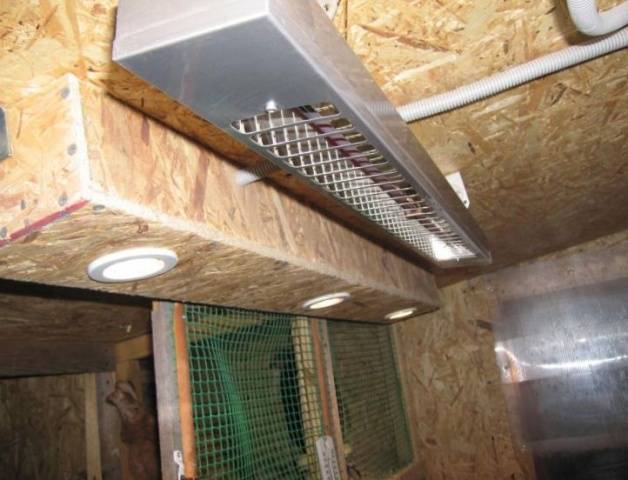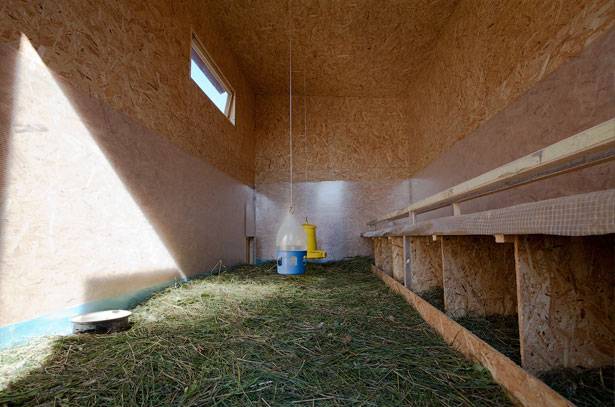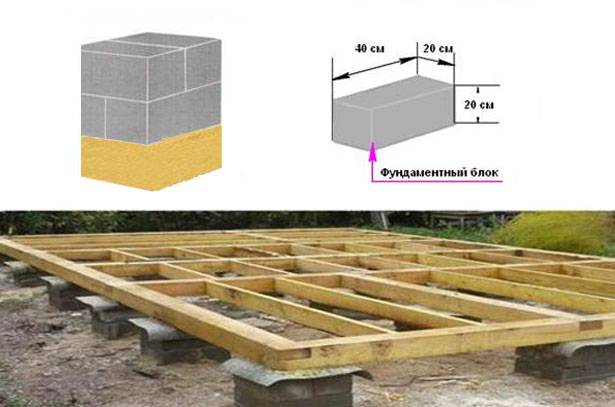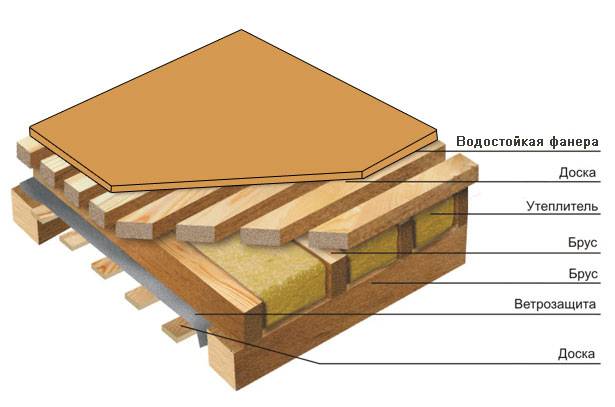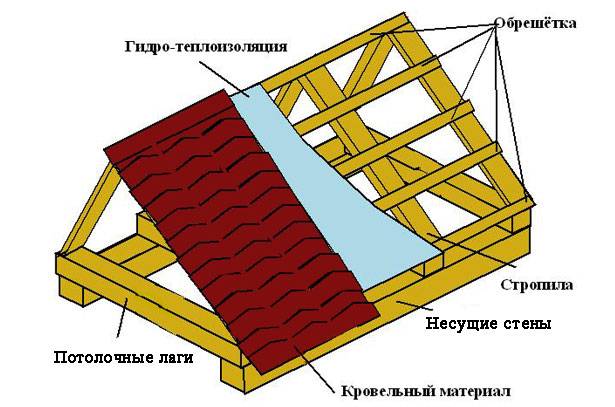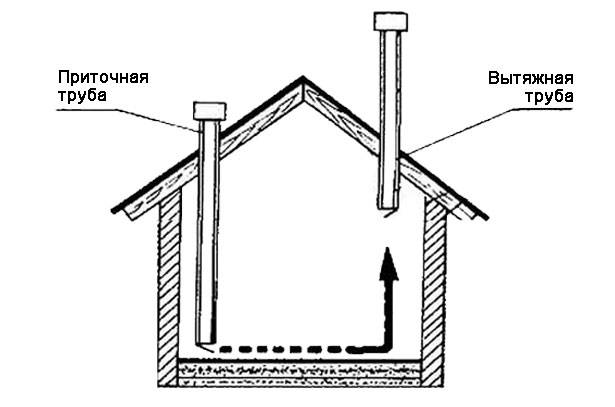Content
You can get normal growth of chickens and good egg production only in a properly built poultry house. Everything is taken into account: the lighting of the barn, the convenient design of nests, perches, feeders, drinkers and other little things. However, the main requirement the chicken coop is its insulation... Chickens do not like the cold, and if the temperature inside the barn is low, productivity will drop dramatically. This nuance must be taken into account when you build a winter do-it-yourself chicken coop, and then you will have the opportunity to have homemade eggs at the table all year round.
Features of a chicken coop for winter poultry keeping
A feature of the winter chicken coop for chickens is that the room must reliably protect the bird from wind and frost in any weather. The built barn will become a full-fledged poultry house after careful insulation all elements of the building, as well as the correct organization of lighting. These are two very important requirements, without which it will not be possible to achieve positive results.
There are three important points that determine the peculiarity of the winter chicken coop:
- Dryness should always be present inside the winter coop. In addition to the low temperature, moisture is bad for the health of the chicken. Even if you build very warm chicken shedbut with poor ventilation, dampness will keep inside the winter house. The bird will often get sick in winter, as humid air is dangerous for the respiratory tract.
- Even at the stage when you are developing a project for a winter chicken coop, you need to take into account its dimensions. Large barn sizes, following the example of a summer poultry house, will not work for the winter. Extra space is difficult and expensive heat... In addition, in winter, the birds huddle together, and do not rush around the chicken coop as briskly as they do in summer. Calculating the size of the winter house, 1 m2 premises are set aside for four layers or three individuals of the meat breed.
- For a winter chicken coop, it is important to install the windows correctly. First, they must be double glazed. Secondly, it is advisable to install windows on the south side. This arrangement contributes to optimal illumination of the barn with sunlight. Chickens receive vitamin D in winter, plus the litter dries out faster. Usually two windows are installed for a poultry house for 20 heads.
This we have considered only the features of the winter poultry house. Further, it is worth finding out what are the general requirements for chicken coops.
Considerations when building a house
It doesn't matter what kind of house we build - winter or summer. There are general requirements for any chicken coop, and you need to know them.
Choosing a place and arranging a walk
Chicken coops are not famous for such a specific smell as pigsties, but still they need to be removed as much as possible from the living quarters. And neighboring houses are also taken into account. Optimally, the house should be removed 15 m from the living area. It is advisable to take into account which direction the wind often blows so that unpleasant odors do not spread throughout the yard. It is good if the house is partially shaded by trees, but not from the side of the windows.
Near the chicken coop from the side of the entrance doors, a mesh fence is provided. After all, chickens will live in the winter poultry house in the summer, which means that they need a place to walk. Usually the size of the enclosure is taken twice the area of the barn.From above, it is advisable to close the walking area with a net to protect the chickens from predators.
Creation of an optimal microclimate
When the hen is comfortable it runs well and grows quickly. It is optimal for chickens in winter to maintain a positive temperature inside the barn from 15 to 18aboutC. Decrease and increase from the specified limit affects the decrease in egg production. Although the bird still feels fine up to +28aboutC. In summer, with the onset of heat, shading and ventilation can reduce the temperature inside the hen house.
In order to provide an optimal microclimate inside the house in winter, several requirements must be met:
- for winter keeping birds it is better to build frame chicken coop made of wood with a minimum wall thickness of 20 cm;
- all elements of the shed are additionally insulated;
- the cracks are carefully caulked, and vents and a ventilation system are provided for ventilation;
- the winter version of the chicken coop requires the installation of heating devices.
Red lamps and IR heaters that run on electricity have proven themselves well. Their rays do not heat the air, but the surface of objects, from which heat is then reflected.
Internal arrangement of the chicken coop
To build a shed for chickens in the yard with your own hands is only half the job. The poultry house requires an internal arrangement. If it is planned to keep chickens with a brood, then a separate place must be planned for them, protected from the hustle and bustle.
Having engaged in the layout of the poultry house, take into account the following requirements:
- The perches are installed at a height of 50 cm from the floor, closer to the wall opposite from the entrance doors. The poles are made from a bar with a section of 50x60 mm, having rounded the corners with a plane. The total length of the perch is calculated by the number of heads. One chicken is allocated 30 cm of free space on the pole. The roost can be installed vertically and horizontally. The choice depends on the amount of free space. The extreme rail is removed from the wall by 25 cm, all the rest are fixed in steps of 35 cm.
- Laying nests are installed at least 50 cm from the floor in a secluded place, closed from drafts. The photo shows the optimal dimensions of the structure. Small sawdust or straw is poured at the bottom so that the eggs do not break. The number of nests depends on the livestock. Optimally build 10 pieces for 20 chickens.
- Feeders and drinkers are placed against the walls in different parts of the house so that they do not interfere with cleaning the room. Steel mesh can be used to create a grass pocket.
A properly made poultry house, in addition to the main doors, should have a summer manhole in the wall. Through it, the chickens will go out for a walk in the fence. In winter, this hole needs to be insulated.
Artificial lighting
The hen needs 10 hours of daylight hours. To increase egg production, it is extended to 12 hours. In any case, the daylight hours are short in winter, so artificial lighting must be installed inside the house. For these purposes, fluorescent, infrared or gas-discharge lamps are optimal. Their spectrum partially replaces the sun's rays. Conventional incandescent bulbs will not have a beneficial effect. The number and power of light sources are calculated based on the area of the chicken coop. The ideal illumination is 20 lux.
Video about the construction of a chicken coop:
The main stages of the construction of a winter chicken coop
So now is the time to review the basic steps to build a winter house. Before starting work on your hands, you need to have an independently drawn up project. We have already talked about calculating the area, but suddenly, over time, you will want to have more chickens. In this case, you can build a winter chicken coop with a margin, and when cold weather sets in, you can fence off the excess room with a temporary screen.
Laying the foundation for a winter house
The construction of a winter poultry house begins with laying the foundation. With the frame method, a columnar base is ideal. The photo shows an example of such a foundation, on top of which the lower frame of the future building is laid.
Let's take a quick look at how to make the pillars:
- Work begins with marking the site where the contour of the future winter poultry house is outlined. At the corners and every 1 m, a peg is placed, indicating the place of installation of the pillar. In these places, holes are dug with a depth of 70-80 cm. On heaving soil, the depth of the holes is increased by more than 1 m.
- At the bottom of each hole, sand with crushed stone or gravel 20 cm thick is poured. The pillars are erected from the material at hand. Simpler and more reliable laying in two bricks is obtained. Ready-made pillars can be made from pieces of pipes with a thickness of 150 mm or reinforced concrete piles. If none of the proposed materials are available, formwork is placed around the holes for pouring concrete pillars.
The posts for a warm chicken coop should be all at the same level, and protrude from the ground by at least 20 cm.
Building the walls of the winter poultry house
The warmest chicken coop is obtained only from wood, so it is better to dwell on the frame construction method. The photo shows an example of joining a bar, when building walls. Their optimum height is 1.9 m.
The procedure for erecting the walls of the winter poultry house is as follows:
- The surface of the columnar foundation is covered with waterproofing. The most suitable material is roofing material.
- The lower frame is knocked out of the bar - the crown. The ends of each blank are fastened in half.
- In a step of 0.6 m, logs are laid, fixing each with hardware to the crown.
- Next, there is the process of erecting the walls of the winter poultry house using the thorn-groove method. For this, cuts are made at the junction of the timber.
- To make the walls of the winter poultry house strong, the bars are additionally reinforced with dowels. Wooden rods are hammered into holes to a depth of one and a half beams in increments of 1 m. The principle of the location of the dowel is shown in the photo.
- One or two window openings are provided on the southern wall of the poultry house, and doors on the opposite side.
The end of the construction of the walls of the winter poultry house is their insulation. First, all the cracks are sealed with tow. Then the wood is treated with antiseptic impregnations that protect against fungus and harmful insects. For thermal insulation of wooden walls, it is better to take mineral wool. It is fixed from the inside or outside, after which it is sewn up with wooden clapboard.
Arrangement of underfloor heating in a winter poultry house
In order to make a warm floor in the winter chicken coop, a board with a section of 25x100 mm is stuffed under the logs, and windproof insulation is laid on top of it. The void between the lags is laid with mineral wool. Planks with a section of 50x150 mm are nailed perpendicular to the lags with a step of 100 mm, and sheets of moisture-resistant plywood are laid on top of them.
Winter poultry house roof construction
For a winter house, it is best to build a gable roof. The attic space will reduce heat loss, plus there will be space for storing inventory. The scheme of the gable roof is shown in the photo. First, ceiling logs are attached to the upper trim of the walls of the hen house. Rafter legs are fixed to them with a slope angle of 35-50about, stitching them with a crate. Further, the cake is collected from hydro, steam and thermal insulation. Any lightweight roofing material is laid last.
A winter coop needs a ceiling. For its manufacture, the logs on both sides are sheathed with plywood, and the voids are laid with mineral wool or foam.
Winter poultry ventilation
In order for an optimal microclimate to be established inside the winter chicken coop, it is imperative to make supply and exhaust ventilation. Its diagram is shown in the photo.
In the manufacture of air ducts, a plastic pipe with a cross section of 100-200 mm is used. For the chicken coop, at least two channels are made, installed in different parts of the room. The pipes are passed through the roof of the winter house.The supply air duct is lowered to the floor itself, leaving a gap of 20 cm, and a maximum of 40 cm is brought out above the roof. The exhaust duct is fixed under the ceiling, and outside it is brought out above the ridge of the roof. Each air duct is closed from the street with a protective cap.
The video shows a winter chicken coop:
Conclusion
That's all for building a house. When the chicken coop is completed for the winter with your own hands, you can cover the floor with bedding and populate the chickens.
